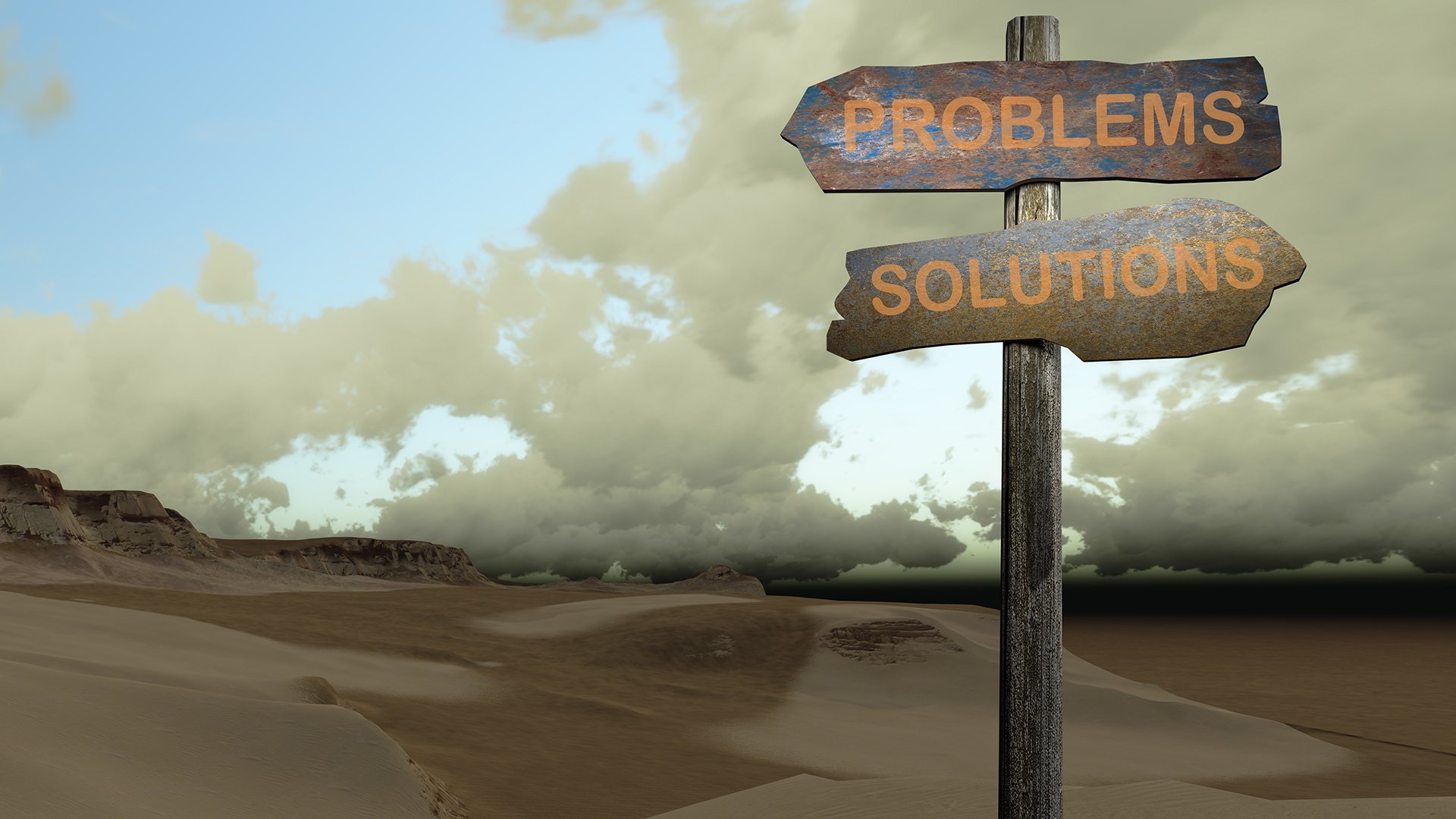Turbulent Times Require Serious Solutions
Jun 12, 2020 • Features • 3D printing • Augmented Reality • Digital Transformation • Parts Pricing and Logistics • worldwide
Covid-19 has changed the world, Service leaders have to look beyond "business as usual" and find new ways to operate. Developing new solutions, delivered via strong leadership, is key to continuity. Bill Pollock explains...
While many would argue that a serious marketing and business development action plan is required at all times, this is especially true during turbulent times. During historical boom economic growth periods, post-war recoveries and peacetime economic expansions, it seemed that virtually any half-hearted marketing or business development activities led to continuing business growth.
However, when the going gets rough, there are two key factors that all services organisations must keep in mind:
- Life – and business – still go on, but
- Customers have neither the time nor the inclination to mess around.
Field Service Strategy During and Post-Pandemic
The compound events of the sudden and unexpected spread of the Coronavirus, and the subsequent crash of the global economic markets have temporarily brought the world, and its businesses, to a stunned and sudden standstill. There is no longer “business (or life) as usual”. Many citizens are now “sheltered at home”, either voluntarily, or mandated by their respective governments. There is also an increasing realisation that life as we knew it would no longer be the same. As a result, neither would field services – nor services of any kind!
Already, there are many facets of the traditional services delivery model that have changed forever. However, workers will continue to use their computers, tablets and smartphones to get their day-to-day jobs done. The mobile workforce will become increasingly mobile – as will the pre-Coronavirus office workforce. As such, networks and carriers will become even more important components of the customer and field technician communications processes than ever before.
Payments will still need to be made, although there are likely to be less ATM transactions, as they will likely be replaced by an increase in online payments via the Internet, Apple Pay, PayPal, Venmo and the like. Chipped credit and debit cards were supposed to slowly replace the older magnetic strip cards; however, this transformation has been accelerated by the Coronavirus pandemic, where more and more payments will now be made via “tap” or “wave”, instead of swipe, insert or hand-to-hand transfers of cards or cash with human clerks.
Patients will still go for MRIs, CT-scans and surgical procedures – but, at least temporarily, not so much for elective surgeries or non-life-threatening medical situations. Milk will still be processed. Pharmaceuticals will be manufactured. Textiles will be sewn. And services organisations will still be called upon to support their customers, dealers and end users with a full array of new and steadily evolving services.
When you think about it, everything that we do in the services industry still needs to get done – especially in these turbulent times. In many ways, we are all doing the same things as we did pre-Coronavirus – although now, there is an extra measure of importance in everything we do, every step we take, and every customer we support. It’s just going to be different! And remain different!
"This may also be a good time to strengthen your own organisation’s relationships amongst its strategic partners..."
As recently as just a few months ago, undoubtedly, we were all dealing with customers (or vendors) who, for whatever reasons, simply strove to meet “acceptable” levels of service delivery performance and customer satisfaction. Some had internal goals, objectives or mandates that needed to be met; while others simply wanted to improve existing levels of customer satisfaction to “keep up with the Joneses”. Now, everything is different. The stakes are suddenly higher.
Every business, everywhere in the civilized world, now requires the highest levels of B2B (and, increasingly, B2C) support from its cadre of vendors and partners – no matter whether the support required is on-site break/fix, helpdesk or preventive maintenance; or systems integration, consulting or professional services. However, increasingly, there has been (and is now virtually mandated) a rapidly-moving transformation away from the traditional on-site, “hands-on” approach (whether supported by Augmented Reality or not) to a “hands off” approach where service and support is, instead, provided via Predictive Diagnostics, Remote Diagnostics/Maintenance, and now – Remote Expertise.
3D Printing within the Field Service Supply Chain?
Further, “last year’s technologies”, such as 3D Printing, have been propelled directly into the forefront of Parts & Inventory Management as global businesses have relied heavily on the ad hoc ability to manufacture parts – on-site, and immediately – to support local medical and related emergencies. Most analysts agree that 3D Printing will fast become a mainstay of parts and inventory management as quality continues to improve and costs come down further.
In today’s tense environment when an unforeseen development can bring air travel and mail service to a sudden halt, thereby stopping parts shipments or freezing deliveries; send unexpectedly high numbers of people to medical centers for tests, evaluation and possible hospitalisation; or disrupt field service operations as otherwise would-be mobile workers sit “sheltered at home” until they are permitted, once again, to make service calls on-site, there is a renewed need for services “above and beyond the call of duty” to support what used to be “business as usual”.
But how can this be done?
Quite simply, it will involve ramping up the types of services and support products that have been historically marketed to a higher level of contingency-based support as well. This may also be a good time to strengthen your own organisation’s relationships amongst its strategic partners. For example, whatever your company’s portfolio of service and support products may have been historically, now would be a propitious time to refocus it around professional services including contingency planning, business continuity and disaster recovery, etc. And, if you already provide these types of services yourself, now is the time to promote them more heavily to the marketplace. However, if you don’t – now may be the right time to find yourself a strategic partner in those fields with which to “piggyback”, or joint market, your services.
"Whatever happens from this point on, the world has changed..."
Customers, who only a few months ago, were primarily concerned with hardware, software and helpdesk support, are now also talking about contingency planning, business continuity and disaster recovery. Terms like “high availability” and “hot sites” have been around, it seems, almost forever. However, with the advent and proliferation of the Coronavirus pandemic, they are now “top of mind” for many businesses, and no longer on the “back burner”. Are these the types of professional services that are also “top of mind” to the marketplace when they think of your organisation? If not, what can you do to make it so?
The Critical Rise of Augmented Reality
Field service solution providers that did not offer an Augmented Reality (AR) or Merged Reality (MR) component to their respective portfolio of offerings yesterday, were still credible alternatives for supporting your organisation’s field operations – but, not any longer! If your services organisation is looking for a credible FSM solution today, you should only be considering those powered by the Internet of Things (IoT), and built on a foundation of AR/MR, Artificial Intelligence (AI) and Machine Learning.
However, AR/MR is mostly helpful for empowering on-site field technicians to perform the “fix” quicker, without mistakes, and without the need to carry pounds of paper or electronic schematics with them as they drive to the customer site – but they still need to drive to the customer site! Although an AR/MR solution is essentially resident in the Cloud, it still requires “feet on the street”!
One alternative would be to train the customer/user to AR/MR to perform the “fix” themselves – but this reflects an age-old conundrum as to how much power do you want to give to the customer? How much can they be trusted to make the “fix” correctly, and without damaging anything, or taking the equipment out of warranty? What about regulatory requirements, particularly in the medical/healthcare and other highly-regulated industry segments? There will need to be an orderly progression to allow some – but not all – customers to add this capability to their self-help capabilities. This is where Remote Expertise can be of great value, incorporating such features as a “virtual” technician on-screen presence, repair instructions shown via superimposed human hands, and on-screen telestration (i.e., similar to a sports commentator’s on-screen annotations during a football match, etc.).
Whatever happens from this point on, the world has changed. The way of conducting business has also changed; however, the way of supporting businesses with the services and support they require to satisfy their customers has not – it just got a lot more complicated, and, perhaps, a bit more serious. With this increased seriousness, we can “kiss goodbye” all those meaningless and frivolous attempts to “bundle” our existing services products into a “new” branded package, or otherwise try to disguise our “same old, same old” offerings by thrusting them into a tiered, or “bullion” packaging portfolio (i.e., Platinum, Gold, Silver, Bronze, etc. – that would be so 1990’s). Our customers have always been too smart for that anyway!
What the market wants – and needs – is an honest and forthright offering of service and support that will give them one less thing to worry about as they attempt to meet their immediate struggles, and their customers’ quickly evolving needs in this “new” – and very different – world.
Turbulent times require a serious approach, plus serious marketing and promotion – and it doesn’t get much more turbulent than this! We owe it to our customers, ourselves and our respective communities to rise to the occasion, and ensure that we can provide the services and support that our customers require immediately, as well as in the short-, mid- and longer-term. Services marketing and business development have never been more serious.
Further Reading:
- Read more articles by Bill Pollock @ www.fieldservicenews.com/billpollock
- Read more about Covid-19 in service @ www.fieldservicenews.com/en-gb/covid-19
- Read more about Digital Transformation in field service @ www.fieldservicenews.com/digital-transformation
- Read more about 3D printing in service @ www.fieldservicenews.com/3d+printing
- Read more from Bill Pollock's own blog @ https://pollockonservice.com





















 Field Service News is published by 1927 Media Ltd, an independent publisher whose sole focus is on the field service sector. As such our entire resources are focused on helping drive the field service sector forwards and aiming to best serve our industry through honest, incisive and innovative media coverage of the global field service sector.
Field Service News is published by 1927 Media Ltd, an independent publisher whose sole focus is on the field service sector. As such our entire resources are focused on helping drive the field service sector forwards and aiming to best serve our industry through honest, incisive and innovative media coverage of the global field service sector.
Leave a Reply